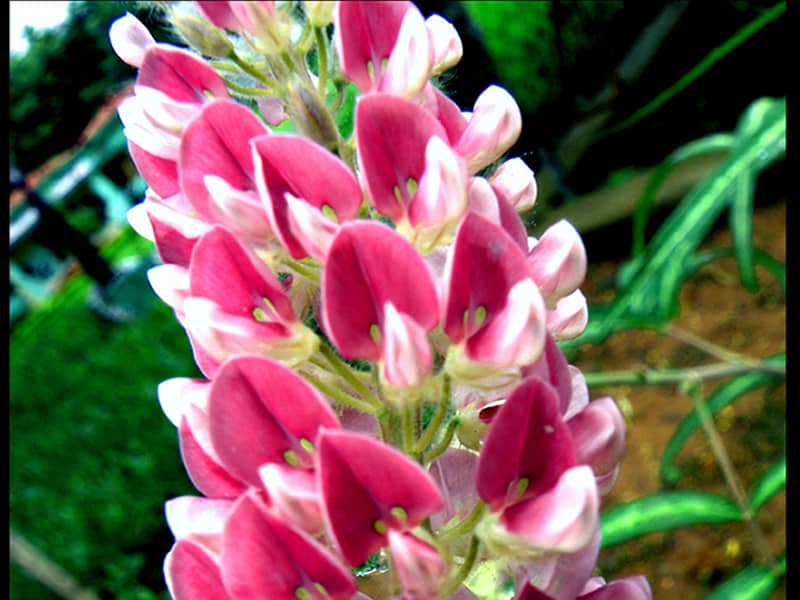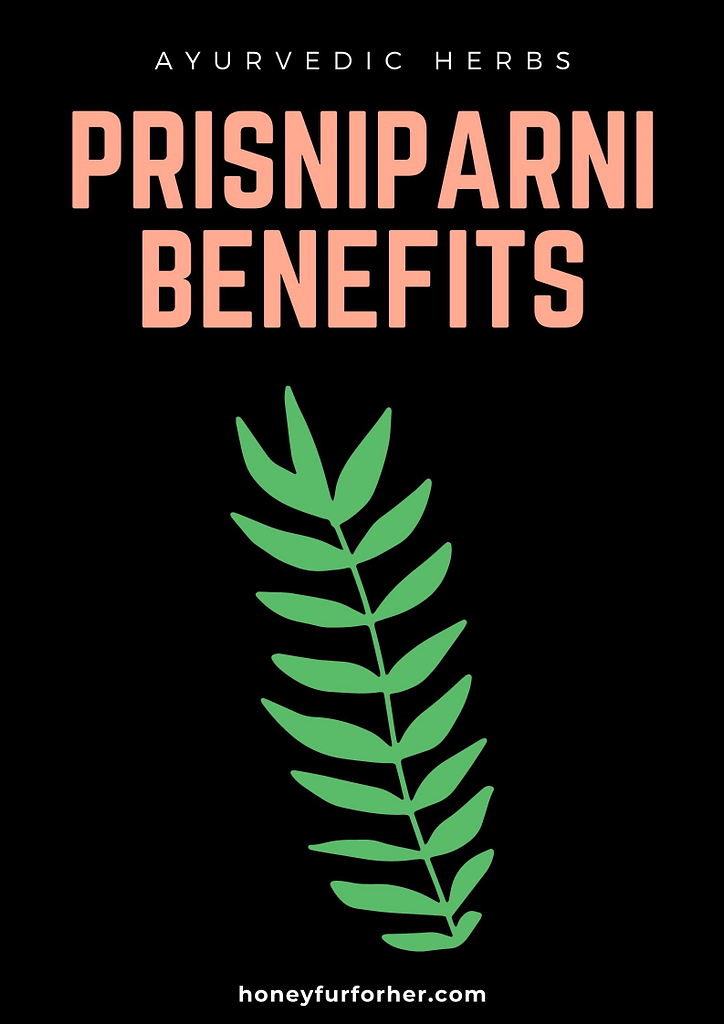Botanically known as Uraria picta, the Prishniparni plant is locally recognized as Dabra and Pithavan as well. Mentioned numerous times in ayurvedic texts, this shrub is home to potent remedies. The roots, the leaves and the plant itself heal and repair, providing numerous remedies to a variety of health issues and diseases. Moreover, this is a plant that is not only a part of the Dashamoola, but also the Panchamoola. It is anti-septic, anti-microbial and anti-inflammatory in nature.

Geography And Morphology
The Prishniparni plant is a shrub that grows in tropical climates and although found all over India, it is not densely found. It is also found in Bangladesh, Sri Lanka, the tropics of Africa, Malay islands, Australia, the Philippines and more.
As for the morphology of the Prishniparni plant, it is a shrub that grows up to nearly 2 metres in height. It has long and narrow leaves that are shiny and smooth on the top surface and hairy and rough underneath. The floral hues range from the spectrum of reds and pinks and blue as well.
Phytochemical Constituents
The Prishniparni plant constitutes the following beneficial phytochemical compounds: Flavonoids, isoflavones, triterpenes, phenols, alkaloids and saponins. These phytochemicals are known to protect the body from various chronic ailments and diseases.
Classical References In Ayurvedic Texts
The Prishniparni plant is mentioned in numerous ayurvedic texts like the Charaka Samhita, Sushrutha Samhita and the Vagbhata.
Charaka Samhita: Angamardhaprashamana (herbal concoction heplful in releiving aches and pains in the body), Shothahara (herbal concoction useful in preventing swelling and inflammations in the body), Sandhaneeya (herbal concoction used to treat fractures and bone dislocations).
Sushrutha Samhita: Vidharaigandhadi gana, Haridradi herbs
Vagbhata: Haridradi gana
Ayurvedic Properties
| Rasa (Taste) | Tikta(Bitter), Madhur(Sweet) |
| Guna(Physical quality) | Laghu(Light) |
| Virya(Potency) | Ushna(Hot) |
| Dosha Karma(Effects) | Pacifies Vata Dosha and Kapha Dosha |
Uses And Benefits
The Prishniparni herb can be used in the treatment of alcoholism, bloody dysentery, psychosis, bleeding fissures and piles, cough, bronchitis, gout, dyspnoea and much more.
- Healing of fractured bones: The herb’s phytochemical constituents allow for quick healing of fractured bones due to the accumulative and depositive properties of calcium and phosphorous that it possesses.
- Treatment and healing of genitourinary issues: The herb can be used to treat sexually transmitted diseases like gonorrhoea, and is effective in reducing pain. It is also used to alleviate symptoms such as pain in the penis, vagina, pain while passing urine, abdominal pain, pelvic pain, etc. It can also reduce symptoms such as discharge of pus and bleeding that are often associated with gonorrhoea.
- It is good in maintaining sexual wellness: The Prishniparni herb increases overall stamina and promotes overall sexual health by increasing the libido and energy in the body.
- Useful in treating infections: The herb is a potent anti-microbial which allows for it to be used in treating numerous bacterial, viral and fungal infections. A warm soak followed by a thorough dry off of the area affected by the fungal infection will alleviate the symptoms. In addition to the same, various herbal concoctions of this herb may be administered to reduce the overall effects of the infection.
- A natural expectorant: This herb is a naturally occurring expectorant, and is a great natural alternative to treat cough, asthma, common cold, bronchitis and other respiratory illnesses.
- Maintains cardiovascular health: The herb promotes active protection and maintains the strength of the cardiovascular muscles and elasticity of the blood vessels. It also maintains the HDL levels and decreases LDL levels and maintains overall healthy blood pressure levels.
- Possesses anti arrhythmic agents: The herb contains phytochemical compounds that maintain the abnormal rhythms of the heart. Atrial fibrillation, atrial flutter, ventricular tachycardia and ventricular fibrillation are well managed and overall cardiac health is ensured.
- Is anticarcinogenic in nature: The anti-carcinogenic properties of the herb promote the growth of healthy cells while inhibiting the growth of cancerous cells, be it benign or malicious in nature.
- Promotes overall mental wellness: This herb can be used to manage mental disorders such as depression, anxiety, insomnia or irregular sleep and more.
- Treating diarrhoea: The herb is very effective in treating symptoms of diarrhoea like runny, watery stools, painful cramps in the abdomen, fever, bloody stools and bloating and maintains the frequency of the expulsions.
Dosage And Remedies
The recommended daily continued dosage of the herb ranges from half a gram to one gram a day. However, this may be entirely dependent on the health of the patient and reactionary inferences.
In decoction form:
About ten to twenty grams of the powder of the plant as a whole is boiled in 400 millilitres of water. This is then reduced to 100 millilitres and the liquid is cooled. It is then strained and sweetened as per the patient’s requirements and consumed lukewarm.
Fresh juice:
The juice of the plant including the leaves, and roots are administered to the patient in quantities of ten to thirty millilitres.
Powder form:
The Prishniparni root powder is weighed to five grams and is uniformly mixed with two grams of turmeric and is consumed for a month. This is a primary remedy for any bone fractures or cracks.
Side Effects
Ayurvedic remedies and preparations rarely ever have side effects. On the same note, this plant does not have any side effects recorded or inferred from observation. It is, however, recommended that the patient interact and consult with a medical practitioner or an Ayurvedic practitioner to ensure that there are no drug interactions.
Did you find this post useful? Would you like to get back to it later? Save THIS PIN below to your Pinterest Natural Living or Ayurveda board!


Many thanks for the education…
I would like to know more on the uses of the individual plant parts as well well
Like uses of the leaves, stem, roots, fruits, etc in their fresh and dry forms